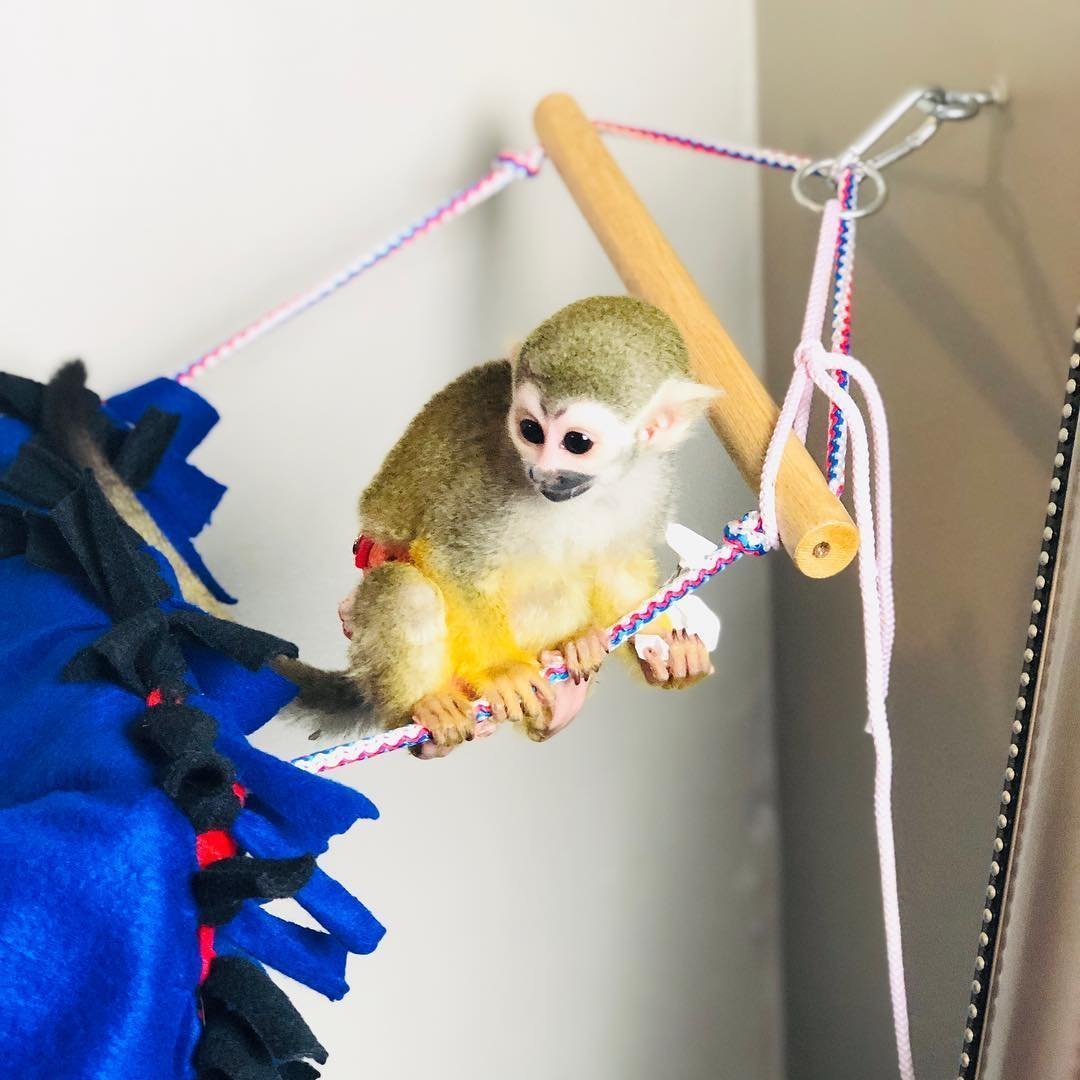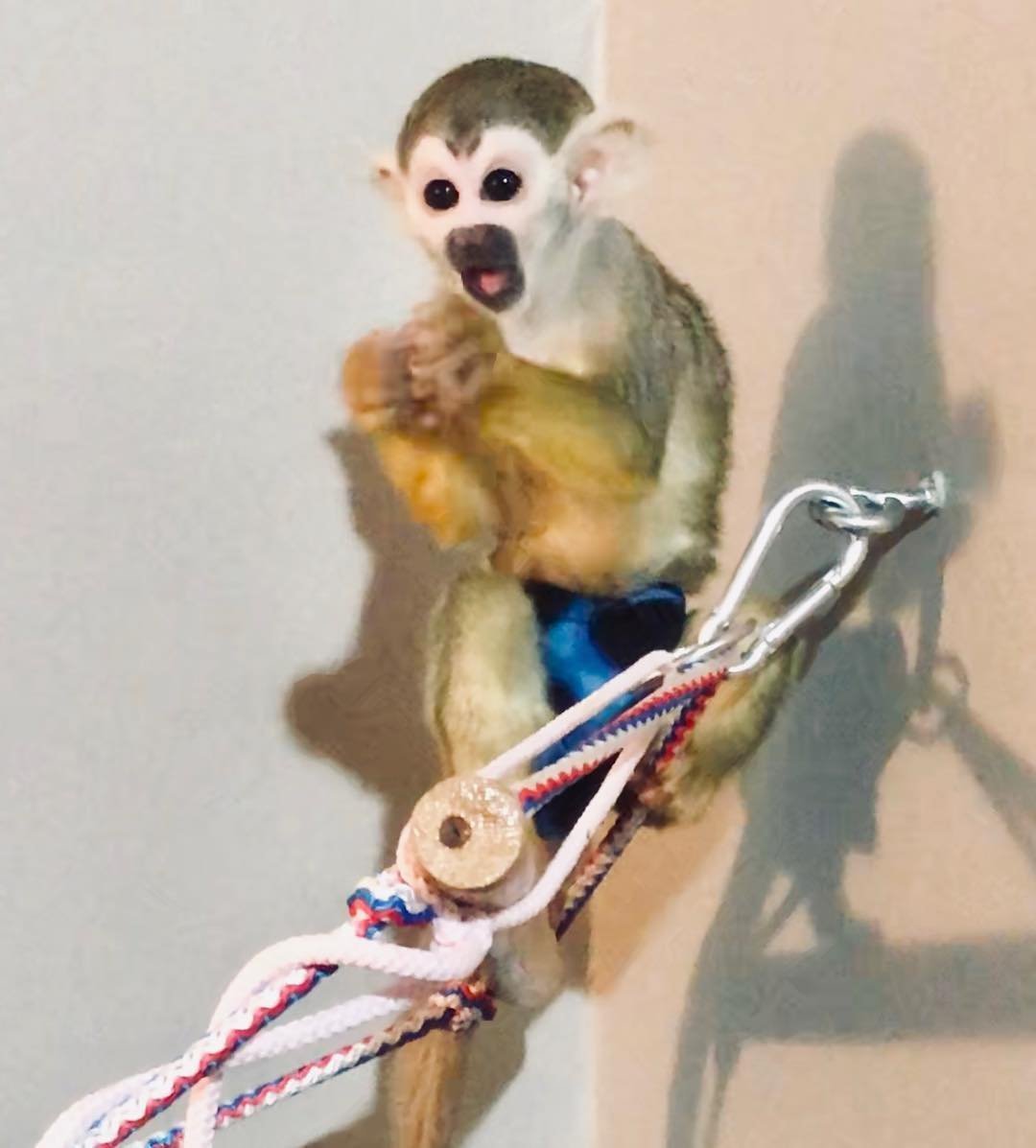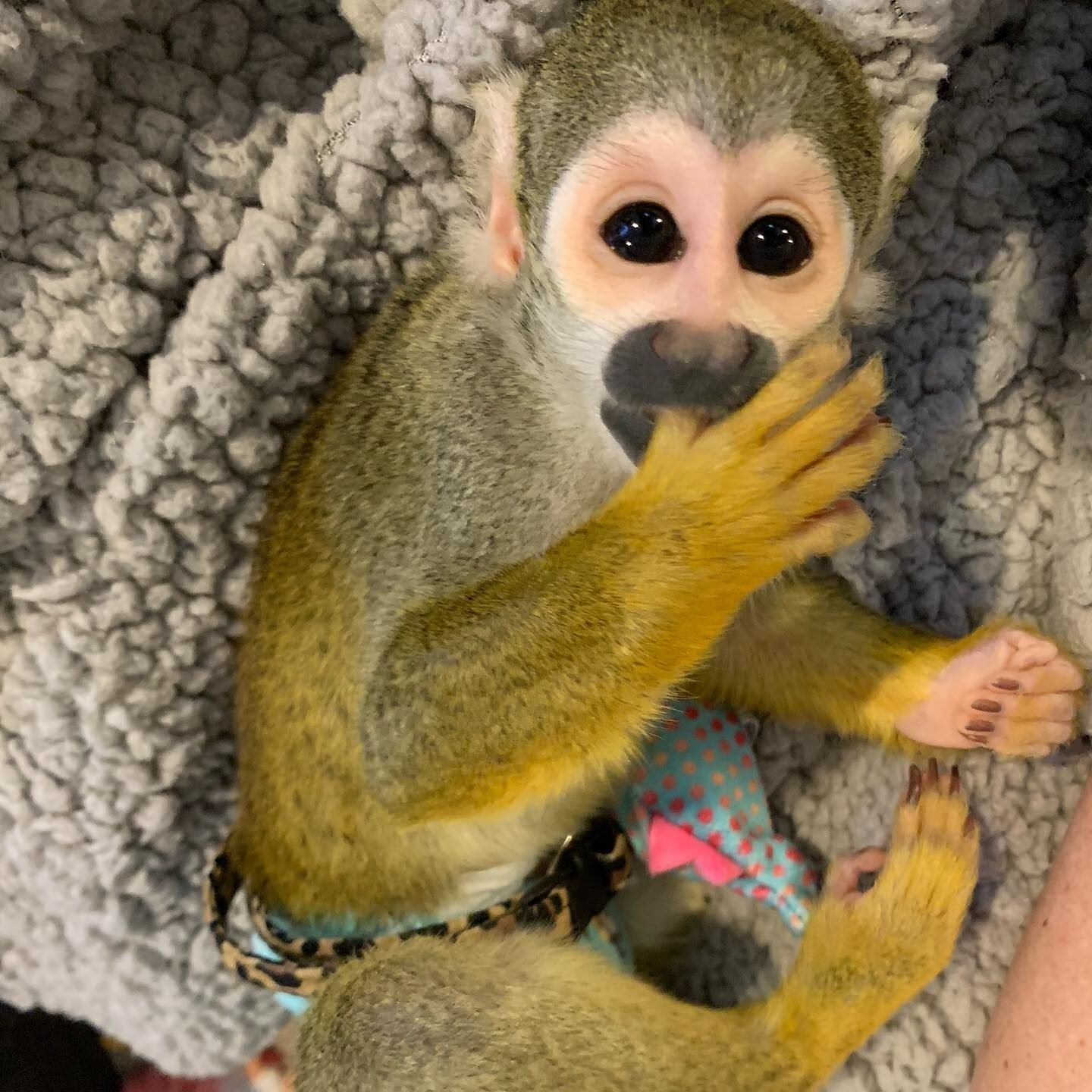Squirrel Monkeys For Sale
Squirrel Monkeys For Sale
Squirrel Monkeys For Sale, Our young/baby squirrel monkeys are bottle-fed and reared by hand. We take great satisfaction in socializing and taming our monkeys so they can become charming parts of your family and lifelong companions.
Original price was: $3,500.00.$3,250.00Current price is: $3,250.00.
Description
Description
Squirrel Monkeys For Sale
Squirrel Monkeys For Sale, Our young/baby squirrel monkeys are bottle-fed and reared by hand. We take great satisfaction in socializing and taming our monkeys so they can become charming parts of your family and lifelong companions.
Since a squirrel monkey’s tail is not prehensile, it cannot be used to grasp objects. They merely utilize it for balance. Squirrel monkeys are nocturnal, just like people. This indicates that they are most active during the day and sleep at night. Due to their enormous brains compared to the size of their bodies, squirrel monkeys are regarded as among the smartest monkeys. They have about 25–30 various sorts of calls, and they are very vocal.
All year long, we have hand-fed infants available. We bottle-feed the infants, who are incredibly docile. They are trained and given starter food. They are all assured to be in good health. Get in touch with us right away to talk about the primates that are now under our care if you’re interested to buy monkeys.
Being a squirrel monkey owner is interesting and fun. You may add a new member to your family with just a little effort and cautious planning. All of these cute little critters have distinct personalities and are playful.
They have a tight relationship with people and exhibit sincere emotions of attachment, love, and happiness. Learn all there is to know about how to purchase a squirrel monkey for sale right here.
Contact us immediately to talk about the primates that are now under our care if you’re interested in buying monkeys. Sale of adorable pet monkeys.
What Do Squirrel Monkeys Look Like?
Squirrel monkeys are known for their slim bodies and lengthy tails, though their tails aren’t used for grasping objects. Instead, these tails enhance their balance as they move swiftly through the trees.
Their short, dense fur comes in an array of shades, often appearing in olive or grayish tones. This color palette helps them blend into their leafy surroundings. A distinctive feature of these monkeys is their facial markings. They have a noticeable black muzzle and striking white rings encircling their eyes, giving them a uniquely engaging appearance.
Squirrel monkeys typically have a body length ranging from 10 to 14 inches (25 to 35 centimeters), not counting their tail. Their tails can be even longer, measuring between 14 and 16.5 inches (35 to 42 centimeters). In terms of weight, these lively primates fall between 1.7 and 2.4 pounds (750 to 1,100 grams).
Life Cycle:
Also squirrel monkeys give birth to a single baby after a 145-day gestation period. Females are mostly in charge of raising the young, and for about a month after birth, they carry the youngsters on their backs. Squirrel monkeys typically live over 20 years.
What Do Squirrel Monkeys Eat?
Squirrel monkeys have a diverse diet, as true omnivores should. Their primary food sources include fruits and seeds, which they eagerly forage in their natural habitat. In addition to these, they also consume a variety of insects providing them with essential proteins and nutrients.
From time to time, these playful creatures will also snack on nuts and feast on vibrant flowers. Not stopping at plant-based foods, squirrel monkeys occasionally hunt small vertebrates such as frogs and lizards to supplement their diet. This varied menu ensures they receive a balanced intake of nutrients necessary for their active lifestyle.
Why are Squirrel Monkeys Used in Scientific Research
Squirrel monkeys are frequently chosen for scientific research due to their remarkable intelligence and adaptability. Their cognitive abilities make them ideal subjects for understanding brain functions and learning processes, providing invaluable insights into human neurological conditions.
Their social behavior adds another layer of interest for researchers studying social dynamics and communication, as these monkeys exhibit complex interactions within their groups. Additionally, their small size and ease of handling contribute to their suitability for laboratory settings.
Despite their usefulness in research, it’s important to note that strict regulations govern their use to ensure ethical treatment and welfare of these intelligent creatures.
Understanding the Conservation Status of Squirrel Monkeys
The conservation status of squirrel monkeys is not uniform across all species. It varies significantly, primarily due to differing environmental challenges.
Endangered Species
- Central American Squirrel Monkey (Saimiri oerstedii): This species is facing severe threats. The primary culprits are habitat loss and fragmentation, primarily driven by agricultural expansion and deforestation. These activities have led to their classification as endangered, underscoring the urgent need for conservation efforts.
More Stable Species
- Common Squirrel Monkey (Saimiri sciureus): In contrast, the common squirrel monkey is faring relatively better. Its populations remain more stable, largely due to a broader habitat range and less susceptibility to environmental disruptions compared to its endangered relatives.
By understanding these differing statuses, conservation strategies can be better tailored to protect these captivating creatures.







